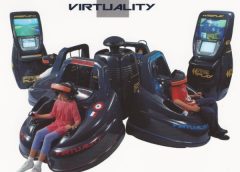Between 1990 and 1991 VR was going to be reaching out into all areas and VR gaming was something that got the most people excited. At the European Computer Graphics Conference And Exhibition in Montreux, Switzerland a man called Jonathan D. Waldern exhibited Virtuality, a VR arcade machine. Virtuality’s release surprised the existing VR industry. Despite crude graphics, it offered what Computer Gaming World described as “all the necessary hallmarks of a fully immersive system.”
Virtuality was founded in 1987 by Dr Jon Waldern who has pioneered VR since 1980. In January 1995 Dennis Ohryn, 54, and Ray Ticer, 48, joined as Deputy Executive Chairman and Finance Director respectively. Together they had over 50 years of experience from technology companies such as Prime Computers, Sun Microsystems and Apple. The Company recruited highly talented individuals in the VR space with a view to take VR in all directions.
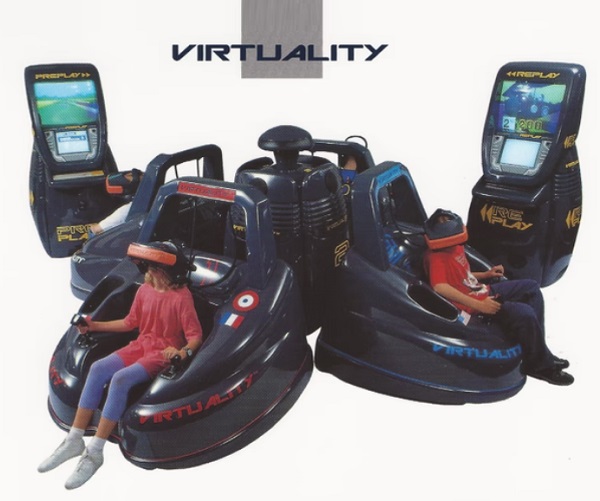
Powered by an Amiga 3000 the Virtuality’ 1000-CS and 1000-SD have a distinctive helmet comprising a brightly coloured front panel with ‘VIRTUALITY‘ embossed across it and each one come with a “pod” and there were two types of these “pods”. One where the player stands up (1000-CS), and the other where they sit down (1000-SD).
Both the headsets in the 1000 series contained two LCD screens at resolutions of 276×372 each. Four speakers and a microphone were also built into the unit but at the time it wasn’t used for gaming. The standing unit has a Polhemus ‘Fast Track’ magnetic source built into the waist-high ring with a receiver in a free-moving joystick (the “Space Joystick”), while the sitting design had two armrest joysticks, or a steering wheel, or aircraft yoke for control, depending on the game.
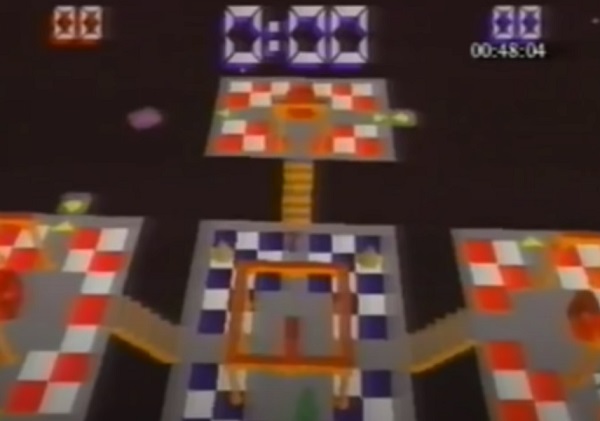
For the 1000 Series, there were 9 games, 4 for the standing pod…
- Dactyl Nightmare – Multiplayer map with several levels and platforms; grenade launcher weapons and pterodactyl enemy
- Grid Busters – Robot shoot-em-up
- Hero – Locked door puzzle
- Legend Quest – Fantasy adventure
And 5 for the sitting pod…
- Battlesphere – Space battle
- Exorex – Robot warriors
- Total Destruction – Stock car racing
- VTOL – A Harrier Jump Jet simulator
- Flying Aces – A biplane dogfight simulator
While arcade fun was the main goal of the Virtuality Group Plc, it also started to branch out into other areas like architecture and construction with VR applications designed to give builders and clients an idea of how things would look once they were built. Called Project Elysium it was a complete integrated VR workstation with development software. But VR gaming was the companies main focus and it was a focus a lot of other companies would soon follow.
In the same year, both Sega and Nintendo said they were actively working on something in the VR space, but nothing was going to bear fruit until several years later.
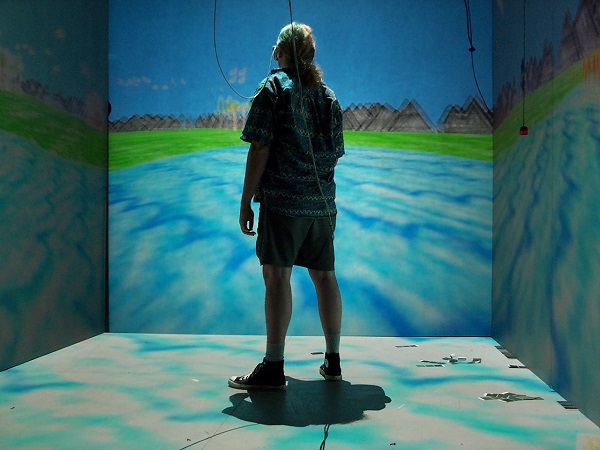
That same year the team at Electronic Visualization Laboratory created the first cubic immersive room called CAVE (The Cave Automatic Virtual Environment). Developed as Cruz-Neira’s PhD thesis, it involved a multi-projected environment, similar to the holodeck from Star Trek the next generation. It allowed people to see their own bodies in relation to others in the room and it was only the 2nd multiplayer VR experience created.
Meanwhile, over in NASA an MIT graduate and scientist called Antonio Medina designed a virtual reality system to “drive” Mars rovers from Earth in apparent real time despite the substantial delay of Mars-Earth-Mars signals. While these days, of course, we are lucky enough to have almost live footage from Mars rovers with full 360 videos.
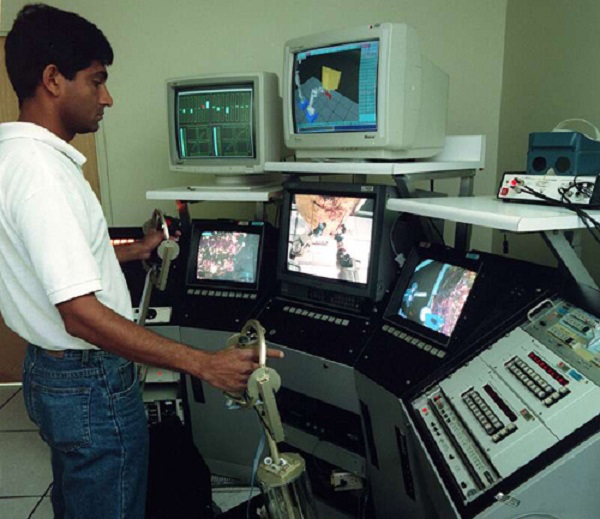
The system called “Computer Simulated Teleoperation” enabled the user in a VR control room with multiple sensor displays, making it feel like they’re inside the robot’s head. By using hand controllers, users can match their movements to the robot’s movements to complete various tasks. What is also fascinating is that this research is still going on today with MIT’s Computer Science and Artificial Intelligence Laboratory (CSAIL) recently presenting a VR system that lets you teleoperate a robot using an Oculus Rift headset.
1991 sure was a very exciting year for VR, but in the next few years things were going to get even crazier…
